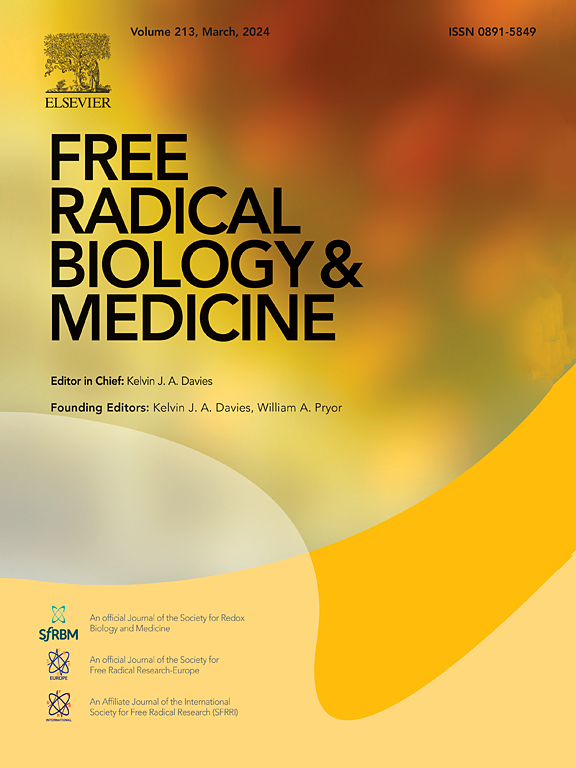Exposure to phenols mixture, oxidative stress, and fasting blood glucose: Association and potential mediation analyses
IF 7.1
2区 生物学
Q1 BIOCHEMISTRY & MOLECULAR BIOLOGY
引用次数: 0
Abstract
Phenols exposure may affect glucose metabolism and increase the risk of type 2 diabetes (T2D). However, the underlying biological mechanisms were poorly understood. In this longitudinal panel study of 122 Chinese adults with three repeated measurements, we aimed to evaluate the associations of multiple phenols exposure with fasting blood glucose (FBG), odds of impaired fasting glucose (IFG) and T2D, and further assess the mediating role of oxidative stress in the above associations. FBG and urinary concentrations of 6 phenols and 3 oxidative stress biomarkers were repeatedly measured for each participant. Linear mixed-effect (LME) models, generalized estimating equations (GEEs), quantile g-computation models, and structural equation models (SEM) were employed to estimate the associations. We observed that urinary methyl paraben (MeP), ethyl paraben (EtP), and propyl paraben (PrP) at multiple lag days were independently associated with increased FBG (all P-FDR <0.05). Exposure to phenols mixture at lag 0 day was positively correlated with FBG, and urinary PrP was the predominant contributor. Meanwhile, exposure to phenols mixture at lag 1 day or at lag 3 day was marginally linked to increased FBG. No significant relationships of phenols exposure at different lag days with risk of IFG and T2D were observed. In addition, we found that 8-hydroxy-deoxyguanosine (8-OHdG) mediated 35.7 % of the association of urinary phenols mixture at lag 1 day with FBG. Our study revealed that phenols exposure, either separately or as a mixture, was related to increased FBG, and oxidative stress is a potential mediating mechanism.

接触酚类混合物、氧化应激和空腹血糖:关联和潜在中介分析
苯酚暴露可能影响葡萄糖代谢,增加2型糖尿病(T2D)的风险。然而,人们对其潜在的生物学机制知之甚少。在这项对122名中国成年人进行的纵向面板研究中,我们通过三次重复测量,旨在评估多种酚暴露与空腹血糖(FBG)、空腹血糖受损(IFG)和T2D的关联,并进一步评估氧化应激在上述关联中的介导作用。重复测量每位参与者的FBG和尿中6种酚类物质和3种氧化应激生物标志物的浓度。采用线性混合效应(LME)模型、广义估计方程(GEEs)、分位数g计算模型和结构方程模型(SEM)来估计相关性。我们观察到多个滞后日尿中对羟基苯甲酸甲酯(MeP)、对羟基苯甲酸乙酯(EtP)和对羟基苯甲酸丙酯(PrP)与FBG升高独立相关(P-FDR均为0.05)。滞后0天暴露于酚类混合物与FBG呈正相关,尿PrP是主要因素。与此同时,滞后1天或滞后3天暴露于酚类混合物与FBG增加略有相关。不同滞后日的酚类暴露与IFG和T2D风险无显著关系。此外,我们发现8-羟基脱氧鸟苷(8-OHdG)介导了1天后尿酚混合物与FBG关联的35.7%。我们的研究表明,酚类物质暴露,无论是单独暴露还是混合暴露,都与FBG增加有关,氧化应激是一种潜在的介导机制。
本文章由计算机程序翻译,如有差异,请以英文原文为准。
求助全文
约1分钟内获得全文
求助全文
来源期刊

Free Radical Biology and Medicine
医学-内分泌学与代谢
CiteScore
14.00
自引率
4.10%
发文量
850
审稿时长
22 days
期刊介绍:
Free Radical Biology and Medicine is a leading journal in the field of redox biology, which is the study of the role of reactive oxygen species (ROS) and other oxidizing agents in biological systems. The journal serves as a premier forum for publishing innovative and groundbreaking research that explores the redox biology of health and disease, covering a wide range of topics and disciplines. Free Radical Biology and Medicine also commissions Special Issues that highlight recent advances in both basic and clinical research, with a particular emphasis on the mechanisms underlying altered metabolism and redox signaling. These Special Issues aim to provide a focused platform for the latest research in the field, fostering collaboration and knowledge exchange among researchers and clinicians.
 求助内容:
求助内容: 应助结果提醒方式:
应助结果提醒方式:


